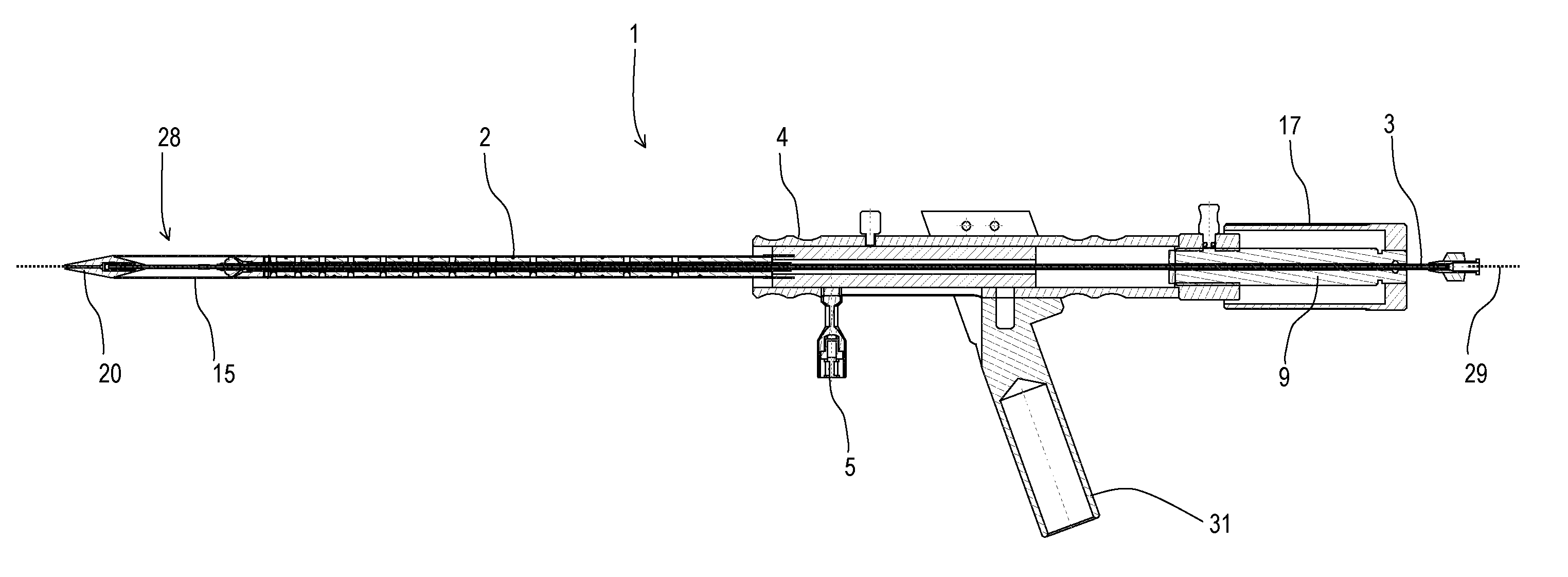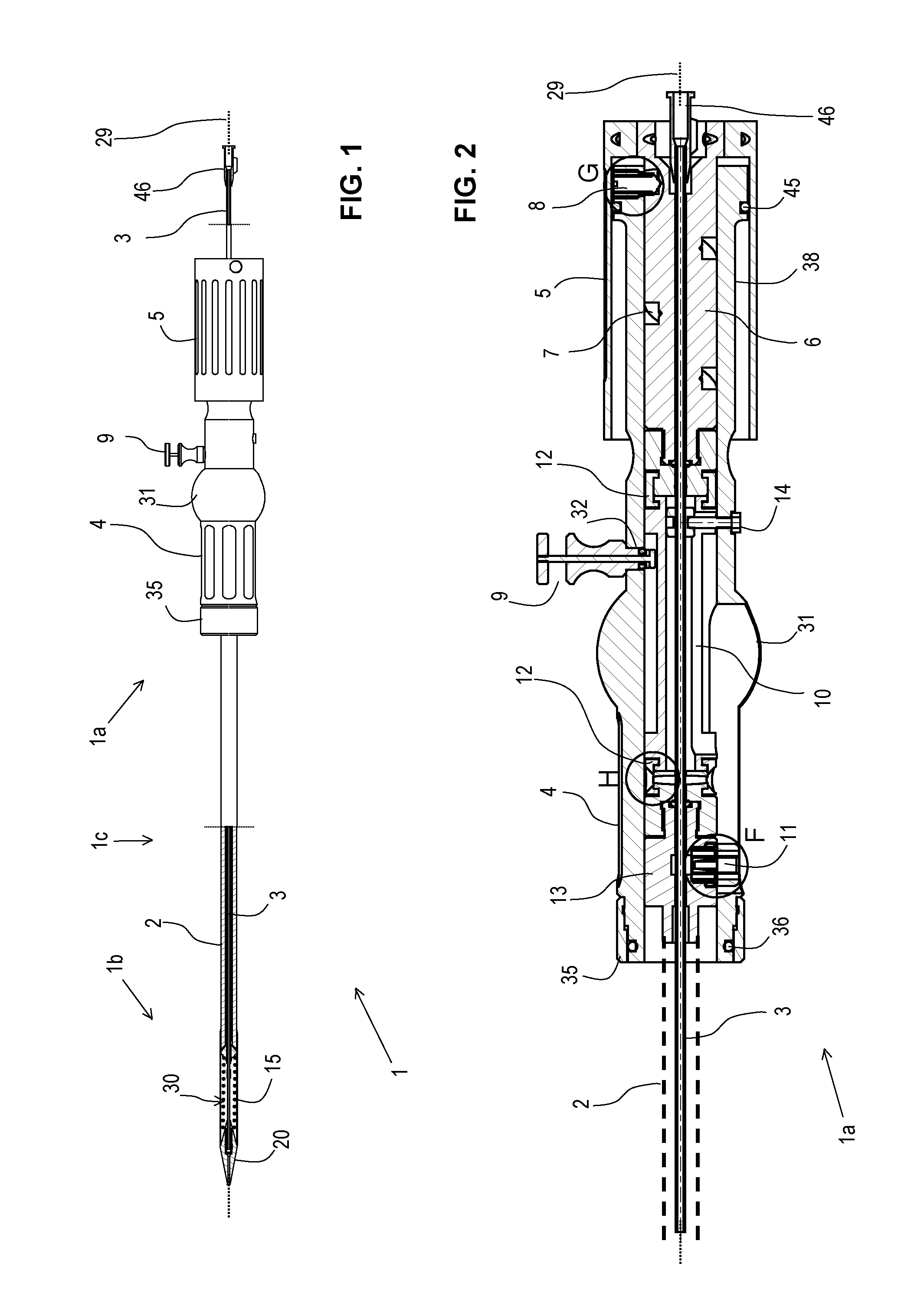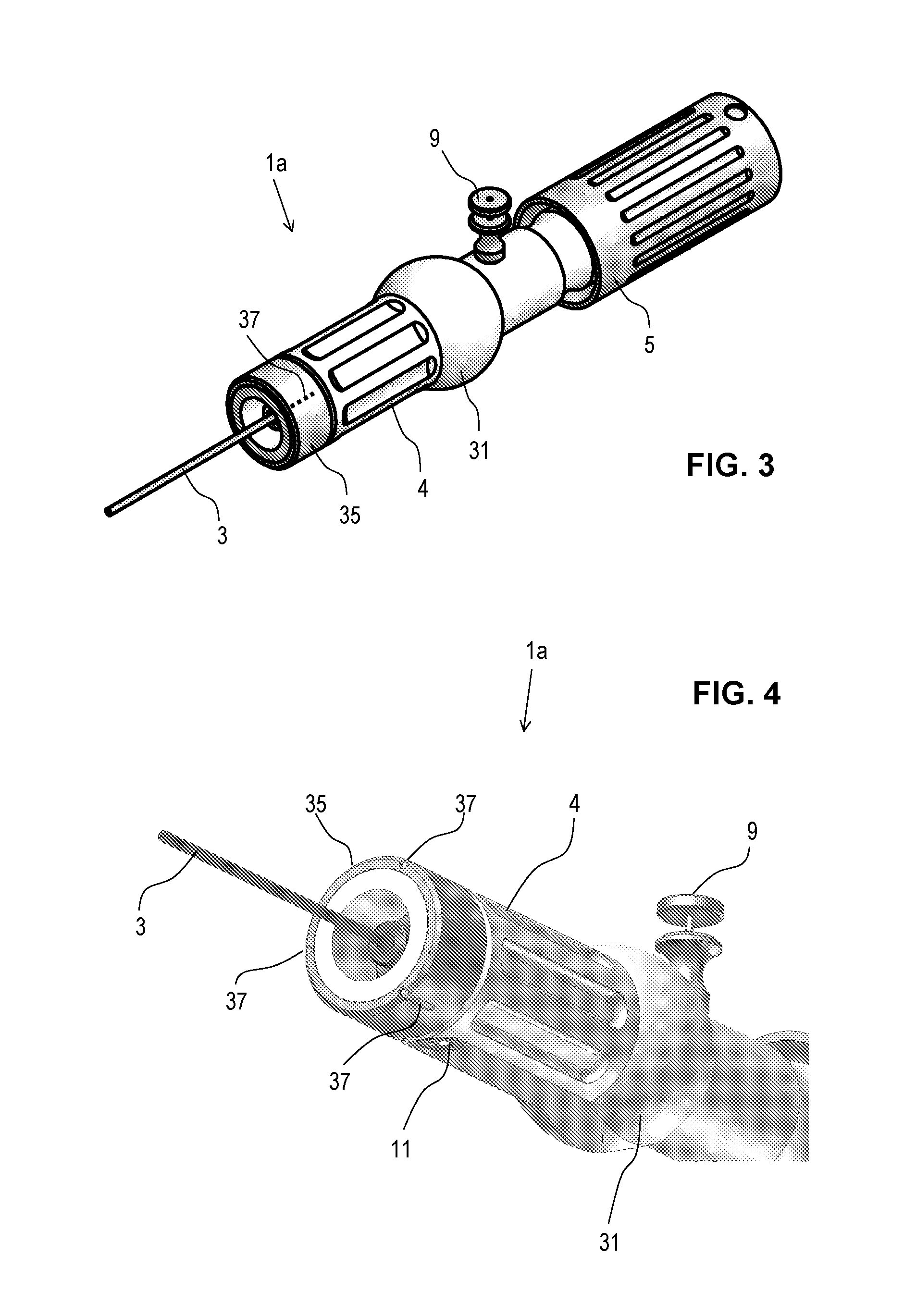Catheter Delivery System For Stent Valve
a technology of stent valve and catheter, which is applied in the field of catheter delivery systems for stent valves, can solve the problems of poor valve functioning, valve regurgitation, valve prolapse and/or coronary occlusion, etc., and achieve the effect of convenient accurate positioning and deployment of stent valves, and simple and effective us
- Summary
- Abstract
- Description
- Claims
- Application Information
AI Technical Summary
Benefits of technology
Problems solved by technology
Method used
Image
Examples
first embodiment
[0121]FIGS. 1-14 illustrate delivery catheter (also referred to as exemplary delivery device 1) for implanting a stent (e.g., valve stent or stent-valve) 15. The delivery catheter 1 comprises a proximal portion 1a to be held by an operator, a distal portion 1b for insertion into the body, and a stem or barrel portion 1c extending between the proximal and distal portions.
[0122]A sheath 2 may extend from the proximal portion 1a to the distal portion 1b where it may cover at least partly a stent 15 accommodated at a stent receiving portion 30, and arranged on tube member 3. Tube member 3 may further comprise a lumen adapted for the insertion of a guide wire 29. The tube member 3 may extend through a handle 4 at the proximal portion 1a. The handle 4 may comprise an actuator for controlling and / or driving linear translation of the sheath 2 in the proximal and / or distal direction(s). Translation of the sheath in e.g., the proximal direction may uncover the stent to deploy or allow deploym...
embodiment 1
[0151]FIG. 15 shows an alternative embodiment 1 of the catheter delivery device 1 according to the present invention. A stent attachment region 28 is located at the distal end of the catheter device, holding the catheter 15. At its most distal tip, the conical section 14 is arranged. The sheath 2 extends from the handle 4 located at the proximal end of the catheter device 1 to the distal end. As such, the sheath 2 may at least partially or completely circumferentially cover the stent 15. Tube member 3 extends along the entire length of the delivery device 1 and comprises a guide wire 29. In this embodiment, the actuation means are configured as trigger element 5. The handle 4 comprises a pistol grip 31 to enable a safe and easy handling of the catheter device by an operator. The device 1 further comprises braking means 9 configured as cylindrical, optionally self turning, threaded element. The threaded element may be analogous to the threaded element 6 as shown on FIG. 4. Said threa...
PUM
 Login to View More
Login to View More Abstract
Description
Claims
Application Information
 Login to View More
Login to View More - R&D
- Intellectual Property
- Life Sciences
- Materials
- Tech Scout
- Unparalleled Data Quality
- Higher Quality Content
- 60% Fewer Hallucinations
Browse by: Latest US Patents, China's latest patents, Technical Efficacy Thesaurus, Application Domain, Technology Topic, Popular Technical Reports.
© 2025 PatSnap. All rights reserved.Legal|Privacy policy|Modern Slavery Act Transparency Statement|Sitemap|About US| Contact US: help@patsnap.com



